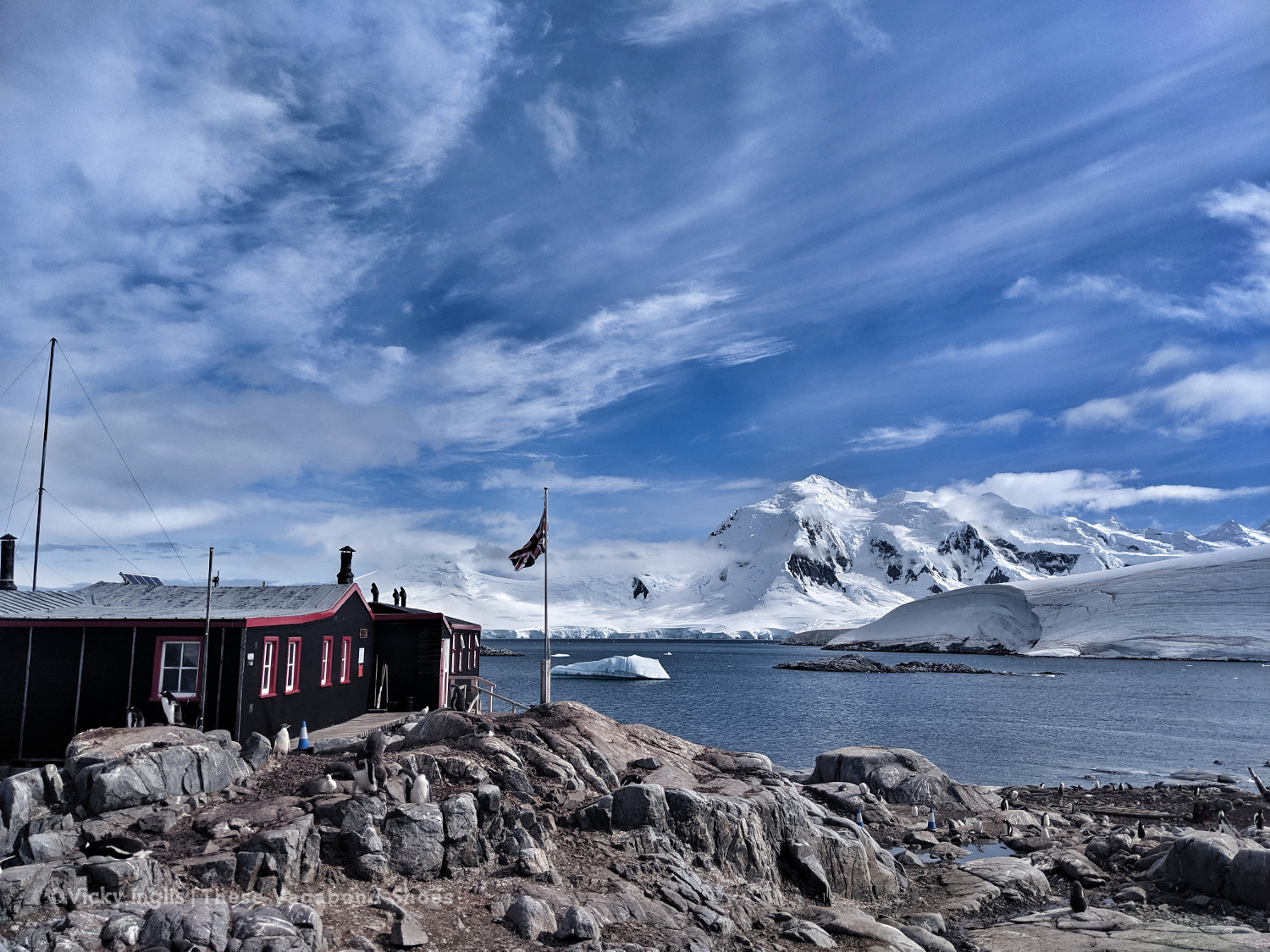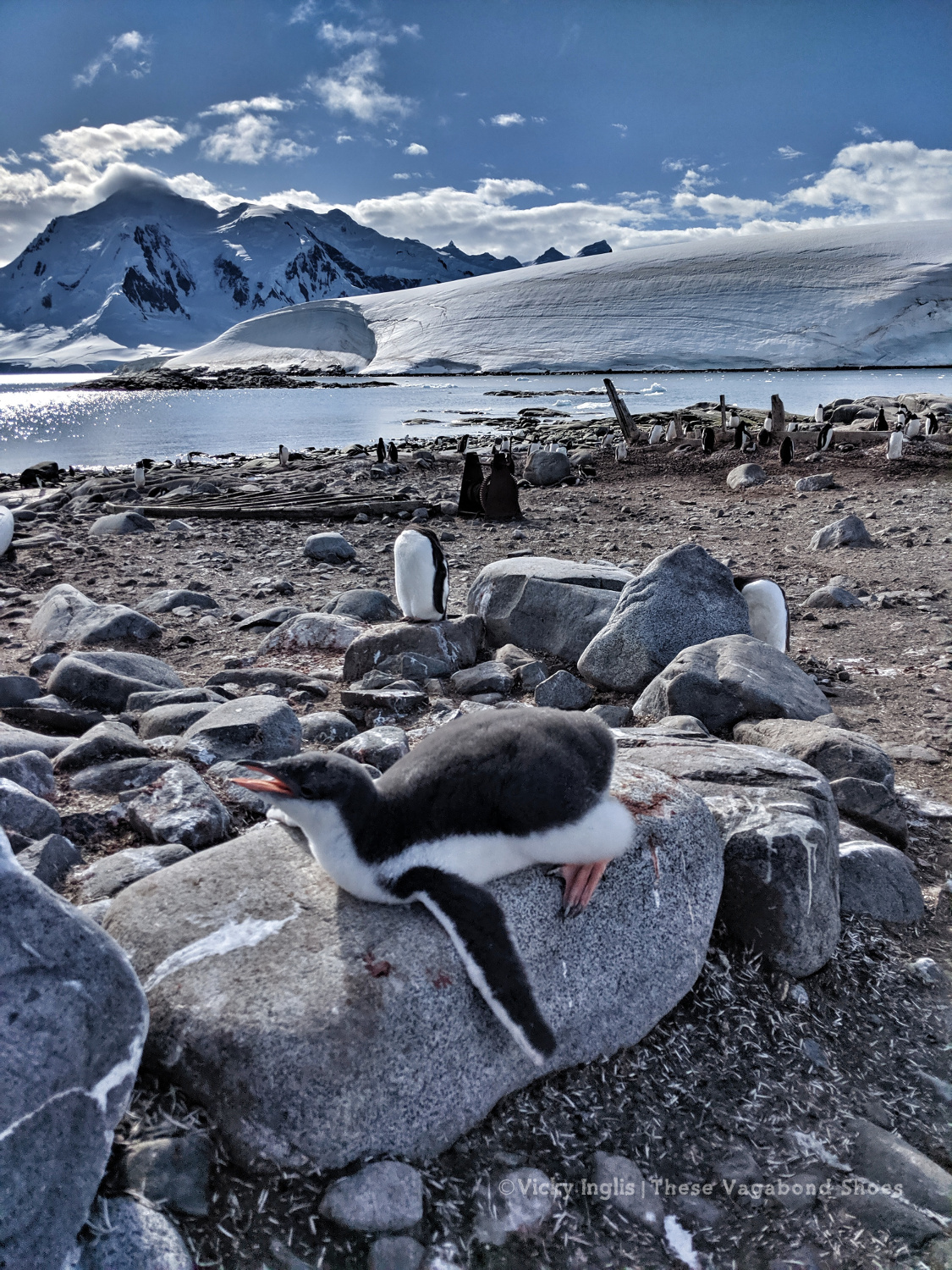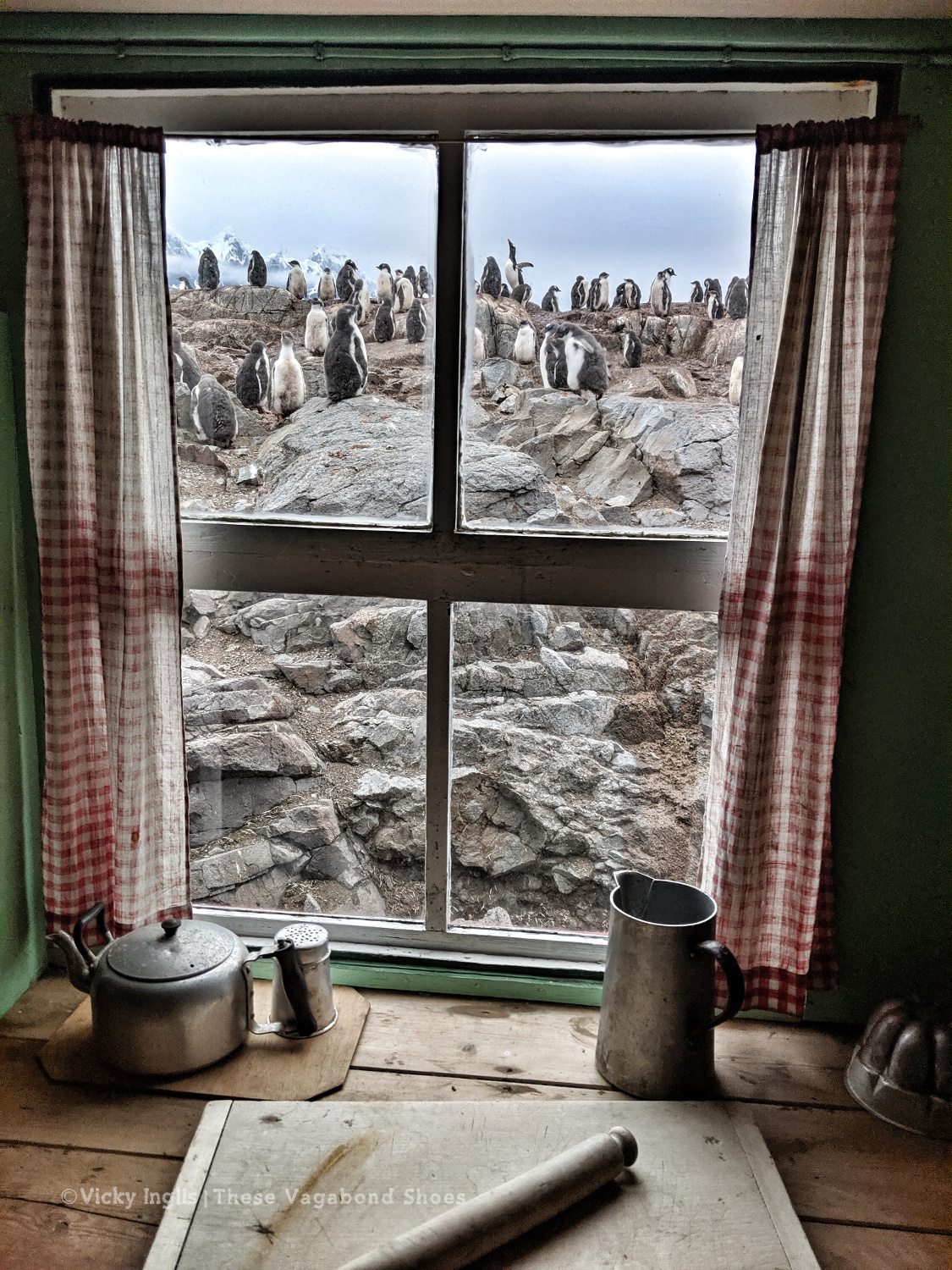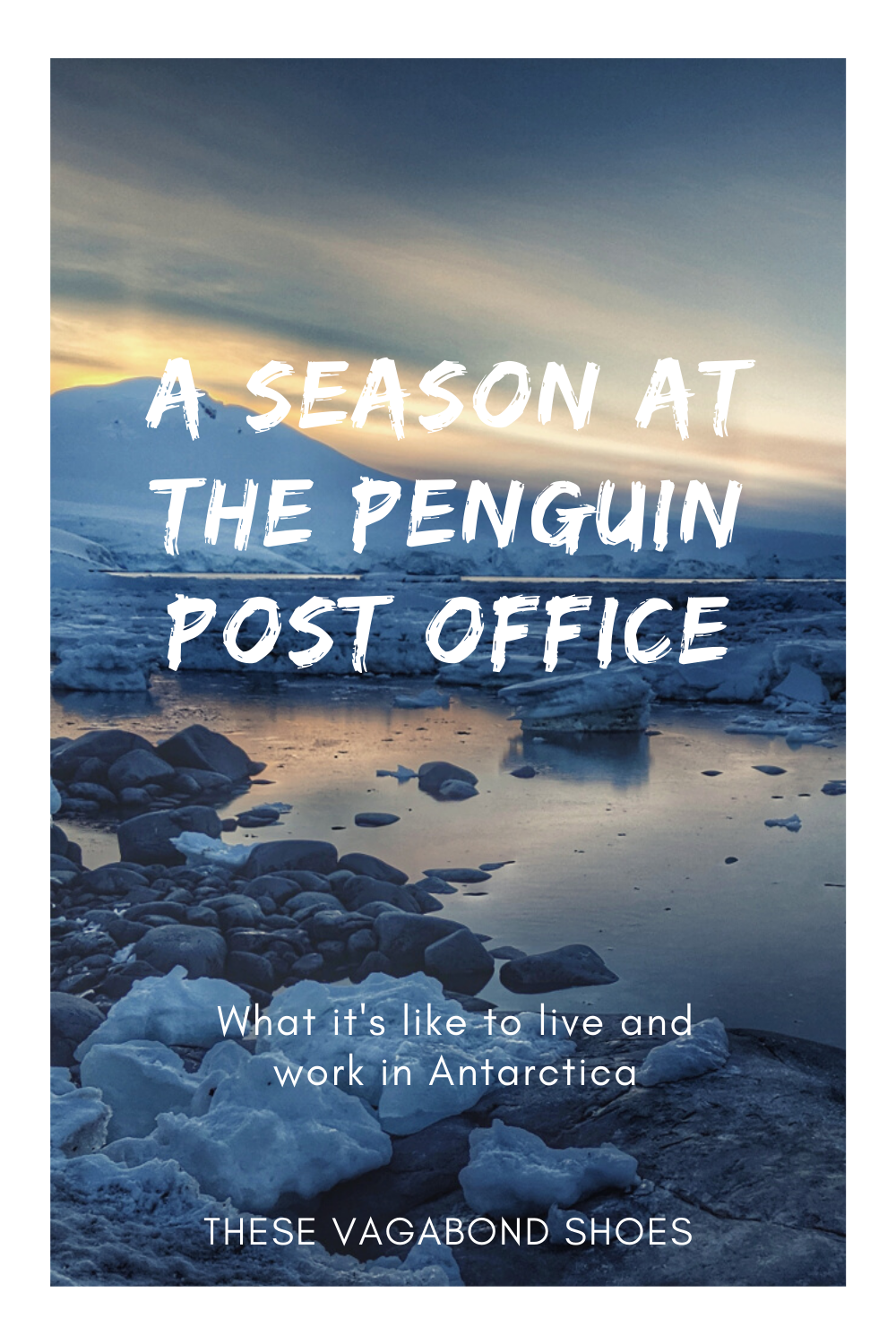
The last three months have been a strange time for all of us, and certainly not what I’d anticipated for my return from Port Lockroy. Reunions planned with friends and family were tempered by the COVID pandemic response, filtered through window glass and laptop screens, and those “what next” plans I’d made were left on ice. Potential opportunities for future work drifted away over the horizon or sank without trace, and other responsibilities surfaced in their wake.
So despite an abundance of time that was available during the lockdown, it was exceptionally difficult to find myself in the right mental space to reflect on my time living and working in Antarctica at Port Lockroy.
Part of that is the challenge of finding the right language to articulate all the experiences, thoughts, emotions, and ideas I felt in Antarctica, and distil down to something palpable, unmasked by superlatives that a place of such outrageous beauty demands. Over the 110 days of our stay, I took thousands of photographs, made several short films and sound recordings, and filled my journal and sketchbook with observations. But still, it sometimes feels as if the whole thing wasn’t quite real. A dream only half-remembered.

It’d taken me a long time to reach Antarctica. I’ve always been drawn to the polar regions, at first through a deep fascination with the strange and unusual wildlife that make their home on (and under) the ice, then being captivated by stories of exploration and adventure. Growing up in northeast Scotland, the polar ship RRS Discovery, in drydock in Dundee, was practically on my doorstep, and the rough country of the nearby Angus Glens and Deeside served as a training ground for some of the first to venture South.
I studied marine biology at university, holding a vague and undefined idea that it had the potential to take me to the Ice as a research scientist or in a support role at a base or on a ship, however, the events of my life conspired to lead me elsewhere. The cost of visiting Antarctica as a tourist was way beyond my reach, so I forgot all about the possibility for a while.
Then, a few years ago, the idea popped up again. My job in environmental education had been made redundant following cutbacks, and after a summer sailing with Draken Harald Hårfagre in Norway, I needed a paying job. I started in the warehouse of a well-known online shopping company*, working 50 hour weeks stocking shelves as they approached their peak-sales period in November. I can honestly say I have never had a less enjoyable job, although my squat and stretch game was on fire.
*That big river in South America. Not the Orinoco.
Driving home one evening, shortly before the anticipated horror of Black Friday/ Cyber Monday shopping, I heard a caller on the radio request a song for the team heading to Antarctica to work in the Penguin Post Office for the season. As soon as I was in the door, I’d searched out the UKAHT website and worked out how to apply for the role. This was going to be my way to go South.

The goal had crystallised, but it still wasn’t a straightforward route to get there. When applications opened the following February, I submitted from Bermuda, days before setting out on a transatlantic sailing voyage. When we arrived in the UK a month later I didn’t get the news I was hoping for, to be part of the 12 people invited to the final selection process, but had an encouraging note from the Operations Manager to tell me I’d been close (lucky number 13), and to keep applying for the role.
In between other opportunities, following selection on my second time around, I got the call to say I’d been successful. I’d just been ashore to chat about boat moorings in Loch Spelve on the Isle of Mull, for the Irene of Bridgewater, and had hopped into my wee tender, untied and pushed off. My phone rang as I was about to start the outboard, so I let myself drift out into the loch to take the call, hoping I didn’t drift out of mobile reception before I got an official nod.


The thing about the opportunity that appealed to me most was the prospect of spending an extended period in a location of which most people will only ever get a snapshot glimpse. To be witness to the progression of time, the comings and goings of the wildlife, and the changing of the seasons in the South. To live beyond the limits of where others get to go.
And that was undoubtedly the highlight of my time in Antarctica. Paying heed to small changes in my surroundings: noting levels of snowmelt or the scouring effects of an excoriating wind on the ice; the swirling movement of ice floes riding on the tides; and the endless march of increasing day length, followed by returning night and star-filled skies as we tilted over the equinox. A muffled boom reverberating through the landscape, felt like a pressure wave in my chest as much as it was heard in my ears, as ice calved and crumbled from the glacier. Sculpted chunks of bergy ice which glowed with a blue luminosity, as if lit from within. There was an ethereal quality to the place, as if we’d been stepped aside from the rest of the world.
Then being captivated by the more subtle things: the shape and movement of clouds; scintillating sundogs and solar arcs; the feel of the wind, from a gentle caress to a knife-sharp slash, the ever-changing play of light and shadow over the landscape. Moments that leave one consistently undone by the beauty of it all.


And of course, the wildlife. The ceaseless cacophony of life in the penguin colony. Observing the penguins on the island, getting to know them by their chosen nesting locations, and following the progress of a pair, it was hard not to anthropomorphise or to foist a unilateral emotional bond upon them. Their swaying, tottering gait, stumpy little legs and rounded tummy, and naïve inquisitiveness around us seem to recall human toddlers, making it hard not to reach out and sweep them up in a steadying embrace. It invoked a secret desire in me to name them all.
Even so, living cheek-by-jowl among penguins for any time, happenings in the colony showed us any human connections we supposed to these creatures are tenuous at best. At first glance it appears they’re putting on a chaotic avian slapstick soap opera: squabbling between nesting neighbours; curious chicks playing with our buckets and brooms, splashing in the boot wash by the museum door; throwing back their wings and chasing adults for food, always demanding more. Taking to the water for the first time, with none of the natural grace one would expect of a sleek sea creature.


In reality, we watched a wholly unsentimental and more elemental existence: newly hatched chicks huddle in nests constructed with bones of their ill-fated siblings of previous years; adults voiding excrement on each other, from nests highest on the rock to those below; snowy sheathbills pairing up in a tag team to snatch an unguarded egg or runty chick from under an adult; the lurking ever-present threat of predators that come both from the skies and the depths. Witnessing the awesome and grotesque cycle of life and death on a daily basis, alternately heartwarming then heartbreaking, always fascinating, is part of the unique Antarctic experience.

Though they demand the most attention, penguins are not the only creatures that leave an indelible mark on the memory of the Antarctic visitor. Other birds, sleek Antarctic terns, the colour of low cloud on a soft day, and piratical skuas, ever-observant to opportunities to pillage the penguin colonies. Snowy sheathbills, our curious companions with their only-a-mother-could-love appearance, tapping away at the buckles of my discarded snowshoes as I make notes on my clipboard. Monstrous giant petrels, with bloodstained plumage and ice blue eyes, ruthless killers that rule the skies here.
The uncanny song of Weddell seals hanging in the air, as they lie dreaming on an ice floe lodged fast in the back bay. The lurking menace of leopard seals, conducting secret surveillance of the shallows, waiting to surge ashore and snatch the unwary. A rounded brown boulder in the shallows, almost the size of a small island, which yawned deeply, transforming itself into a bull elephant seal.
On still days, when fog lay like a felt blanket over the natural harbour obscuring views of peaks and pinnacles of Wiencke Island, immediate sounds were dampened, amplifying the roaring silence that lay behind. The raucous colonies of penguins and blue-eyed shags muffled long enough to pick out the saltwater signals of whales taking their breaths in the silky, quicksilver water of the bay; two, no three humpbacks scouting the deep water channel on the inside of Lecuyer Point, or a lone minke making its way between the improbably named islands of Boogie and Woogie.

Port Lockroy is a rare place in Antarctica, a tiny island where the human story of the continent is writ large. Around us was the evidence of the whalers that followed the ships of the Heroic Age of Exploration South, through to Operation Tabarin and the construction of Bransfield House/Base A, at the time when international relations on the ice were strained, and politics pushed to the fore. Then the era of science, where the continent was transformed into a vast laboratory of measuring and monitoring, revealed by the artefacts and oral histories of the museum, to our current-day experiences of expedition tourism and bucket-list travel.


The wealth of stories continued with the people we met throughout the season, both face-to-face and through correspondence delivered to the Post Office. Previous Lockroy team members, experienced field guides and expedition leaders, research scientists, and former and current staff of both the UK Antarctic Heritage Trust and British Antarctic Survey passed through Goudier Island during the season, enriching our understanding of the place and welcoming us to the Antarctic family like we already belonged, allowing us to become part of the ongoing history of the place.
Port Lockroy is reported to be one of the most visited sites in Antarctica, and while the 2019/20 season proved to be far from usual, we still welcomed thousands of people into our small world for a while, and helped them pass on their share of wonder and awe written on the back of a postcard.

Finally, all that remains is to say what a privilege it was to share such a profound experience with an incredible team of people, who started the season as my work colleagues and after four months of living in each other’s pockets, are firmly life-long friends. Sitting together on a golden afternoon by the landing site, once the day’s guests had gone, watching for the blown spray and flashes of tail flukes across the Neumayer Channel, listening to the snapcracklepop of melting icebergs, and toasting our luck with gin gifted by the crew of a superyacht and tonic scrounged from our favourite hospitality manager. Or huddled together in a cuddlepuddle under blankets and duvets to watch a film as sleety rain-lashed windows and storm-force winds shook the very building around us. These are the moments I’ll cherish most.


Standing on the aft deck of the ship that would take us back to Ushuaia I could feel the undeniable magnetic pull from our island, tucked under the sheer rock and ice of Mount Luigi and the Seven Sisters, then a sudden snap as we rounded the headland and Port Lockroy was lost behind the rise of Doumer Island. I think a little piece of my heart was left behind.
By endurance we sauna.

Extracts from this piece were first published as posts on the UKAHT Port Lockroy blog.
Inspired by what you’ve read? Why not pin this post to your bucket list travel board?





